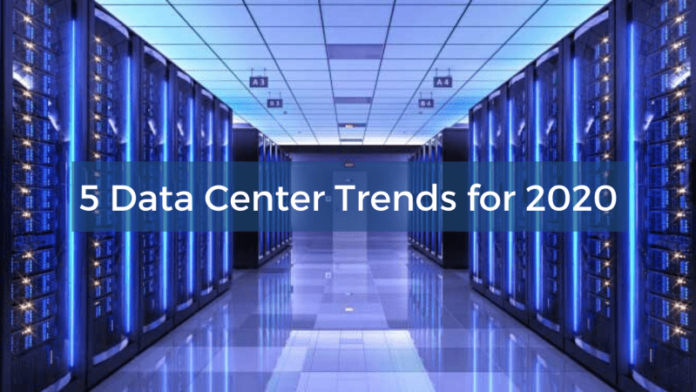Data has been emerging as the new oil of the digital economy. With all those constant changes in today’s business environment across the globe, data workloads have been evolving along with the applications and their storage requirements. Over time, the SSDs: a type of storage disks have become the storage technology-of-choice for application acceleration and access to real-time data. For instance, emerging technologies, such as autonomous driving, AI, machine learning, edge applications and more generate hundreds of terabytes of data. With the technology landscape rapidly shifting, data infrastructure has taken a quantum leap to help organizations meet data demands and support new workloads. So here are a few Data Center Trends in the Tech Landscape of 2020.
Top 5 Data Center Trends in the Tech Landscape of 2020
-
Workload evolution
With the introduction of cloud storage and the proliferation of analytics, edge devices and machine learning (ML) has led organizations to adapt their infrastructure to new types of workloads. We have been witnessing a huge shift in the diversity of data being generated by enterprises as well as consumers. The expanse in video streaming platforms and content providers streaming 694K hours of video in a single minute! It is no surprise video-on-demand, streaming and caching videos have become the entertainment standard.
-
A better understanding of the role of data infrastructure
Data Center architects nowadays come with a deeper knowledge of their applications and keen insights on the demand for their infrastructure. Therefore, based on an application’s read and write patterns, data centre architects are deploying NVMe SSDs as primary storage devices that can deliver optimum performance as well as low power and high endurance for executing a particular task.
-
Advancements in 3D NAND technology
A type of non-volatile storage technology, NAND has revolutionized Internet of Things (IoT), mobile devices, personal computing, wearables, videography and flash in the data centre. The advancements in NAND flash technology have led to more capacity and higher density SSDs. This has ensured a high level of endurance, performance and reliability, thereby opening new possibilities for optimized flash-based devices.
-
NVMe™
Designed to maximise the benefit of high-performance flash storage media, NVM Express (NVMe) delivers blazing fast performance and low latency. This technology has proved to be a game-changer for data centres and applications, particularly for real-time analytics, machine-to-machine (M2M) workloads, Internet of Things (IoT), and emerging technologies, which are based on NVMe over Fabrics™.
-
The move from general to purpose-built solutions
Choosing the right data storage foundation is crucial for optimizing solutions for delivering efficiencies in the changing data landscape. Data centre customers are fast realizing that the current general-purpose architectures are inefficient and carry resource and cost overhead. As the demand for data centres multiplies, the concept of ‘one size fits all’ doesn’t work. Thus, organisations need to focus on developing purpose-built solutions and adopt architectures that go beyond the limited resource ratios of general-purpose processing, memory, storage and interconnect. Innovative technologies, such as 3D NAND, and various tiers of flash enabled by NVMe as well as a wide range of form factors, will help deliver enhanced capabilities that can meet the new demands of data.
The next-generation data centre
The entire IT ecosystem is undergoing a sea of change – one that is enabling more opportunities for data and is unlocking new revenue streams. Organizations are transitioning to purpose-built solutions to improve performance, efficiency, density and overall cost of ownership. The new generation of drives, such as NVMe SSDs, are based on evolving workloads and trends within the data center and NAND technology. With speeds of up to 3.1GiB/s and 1.4GiB/s sequential read and write performance, these drives make ideal solutions for data centres that are being built to accommodate new workloads, such as autonomous driving, surveillance, voice recognition, edge computing and AI and ML.
How many of you guys use a NVMe drive? Do let us know by commenting below or tweeting it out to us @theunbiasedblog











